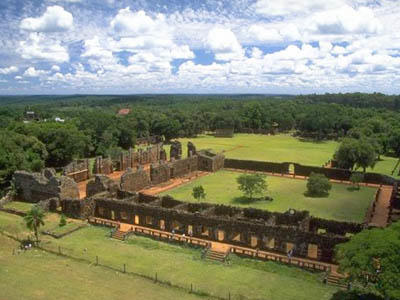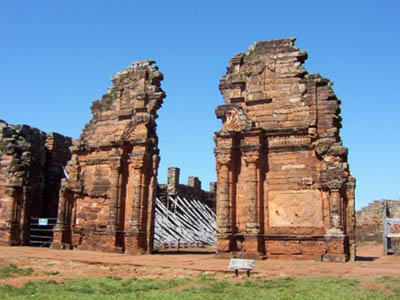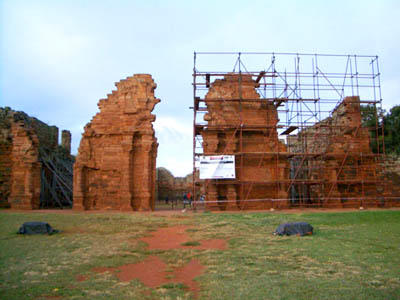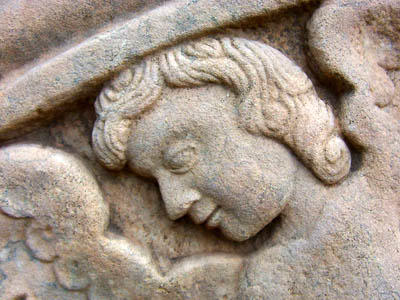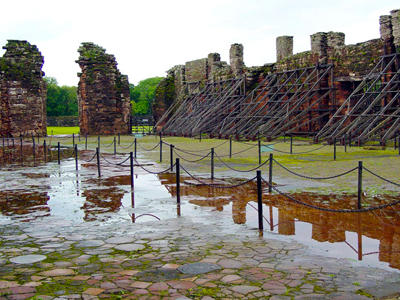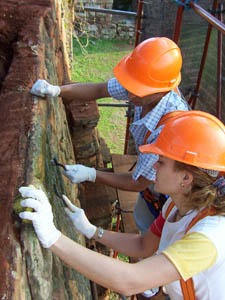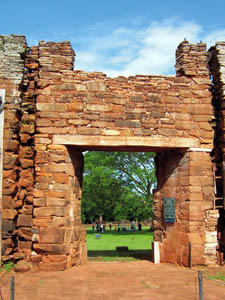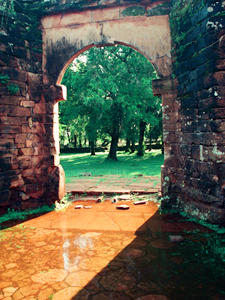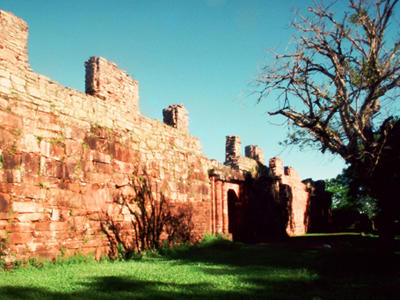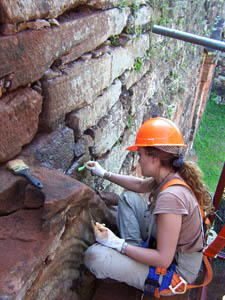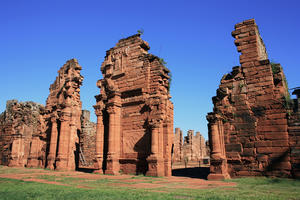San Ignacio Miní
In the midst of the Argentine rainforest stand the ruins of San Ignacio Miní, a seventeenth-century Jesuit mission complex. With the aim of converting the native Guaraní population, the Jesuits established 30 missions in an area of South America that now includes parts of Paraguay, Argentina, and Brazil. San Ignacio Miní was constructed in 1666 in the Spanish baroque style, heavily influenced by indigenous motifs. In accordance with the prescribed layout of all missions, San Ignacio Miní had a central square with buildings clustered around it. The complex was equipped with a variety of resources including a hospital, a school, dormitories, and a magnificent stone church with a wood interior. While the religious activity at the mission influenced Guaraní culture, it also played a role in keeping it alive by protecting its people and their language. San Ignacio Miní sheltered its constituents from ongoing wars and slave traders. The facility also owned several printing presses which supplied spiritual texts and other works in the Guaraní language. Following the Guaraní War in the 1750s and the expulsion of the Jesuits in 1767, the missions were abandoned to the elements.
1996 World Monuments Watch
The ruins of San Ignacio Miní were closed to the public in the early 1990s because of structural instability. Over the centuries, multiple collapses had occurred and erosion by wind, water, and biological growth threatened further damage. The nearby town had expanded to envelop the site, putting it at risk for looting and increasing drainage and sewage problems. WMF placed San Ignacio Miní on the Watch list in 1996 (and again in 2004, once the project was under way, as part of a group nomination of the South American Jesuit missions). WMF supported the repair and restoration of the church’s eastern portal. In the 1940s, wooden beams had been inserted into the structure to prevent collapse of the gateway, but these had begun to sag. The lintel was supported by scaffolding while the old beams were removed and new ones were installed. The stones of the portal were removed, cleaned, conserved, and replaced. Subsequent WMF projects at San Ignacio Miní have included the restoration of the main portal and the development of an interpretation center. WMF also organized a conference at the site with preservation agencies, conservation experts, and the Argentine government to devise a long-term management plan for the ruins that can be used as a model for other sites in the area.
The red-tinted architecture of San Ignacio Miní is impressive even in its ruined state. The mix of Spanish baroque and Guaraní styles is still evident in the disconnected walls and arches of the church. San Ignacio Miní is a spectacular example of mission planning and layout, one of only few that survive today. Due to the commitment of many organizations and individuals to the conservation effort at the site, San Ignacio Miní has been reopened to the public and continues to display its historical legacy.

